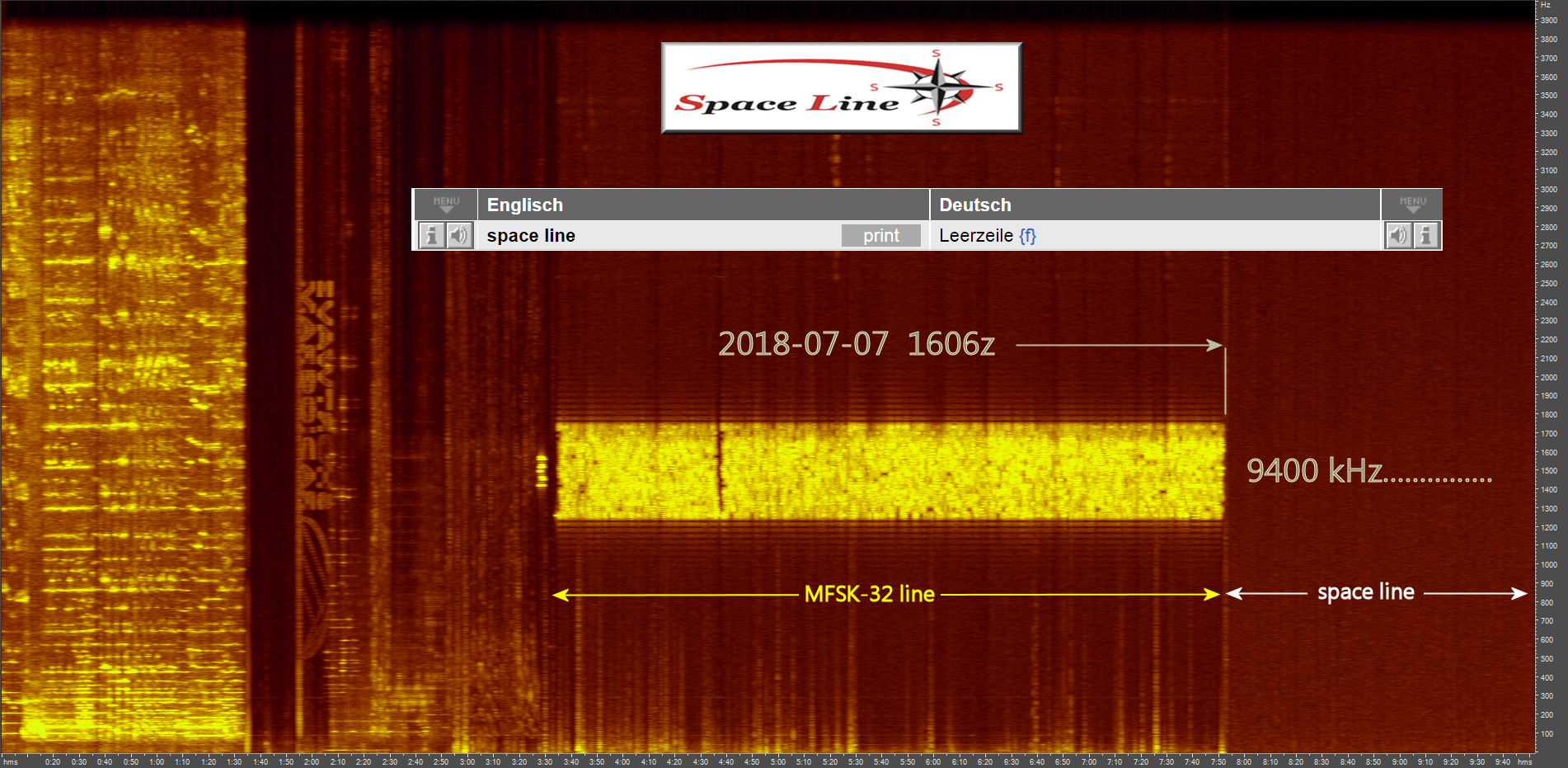http://www.rhci-online.net/radiogram/radiogram.htm
http://www.rhci-online.net/radiogram/radiogram.htm
|
RSID: <<2018-07-04T20:25Z MFSK-32 @ 6070000+1500>>
START IBC - ITALIAN BROADCASTING CORPORATION
mail: ibc@europe.com
Sending Pic:150x144C;
END
|
|
|
RSID: <<2018-07- 07T15:30ZMFSK-64 @ 9400000+1500>>
|
|

RSID: <<2018-07-06T20:31Z
MFSK-32 @
7780000+1500>>
Welcome to program 55 of Shortwave Radiogram.
I'm Kim Andrew Elliott in Arlington, Virginia USA.
Here is the lineup for today's program, in MFSK modes as noted:
1:31 MFSK32: Program preview (now)
2:36 Asteroid belt may be remains of a half-dozen planets*
9:18 MFSK64: Did heavy rain give Mars its deep valleys?*
12:47 Night of Nights maritime radio event on 12 July*
15:22 This week's images*
28:06 MFSK32: Closing announcements
* with image(s)
Please send reception reports to
radiogram@verizon.net
And visit http://swradiogram.net
Twitter:
@SWRadiogram
From New Atlas:
Asteroid belt may be remains of half a dozen ancient planets
Michael Irving
3 July 2018
They might seem like boring old rocks, but asteroids and
meteorites have some fascinating stories to tell about the
history of the solar system. New research from the University of
Florida has now traced back the origins of almost all asteroids
in the inner belt to just five or six ancient minor planets.
The solar system was far rougher in its youth than it is today.
As the huge disc of dust and gas surrounding the Sun started
clumping together, planets and moons were born and torn apart as
they smashed into each other. The eight planets we know today are
the survivors of this time, but other protoplanets were likely
jostling for space before or during their reign.
Some of these lost worlds came to an explosive end when they
collided with Earth, Mars and Uranus, but they live on in the
form of moons of those planets. Meteorites, meanwhile, tell tales
of ancient ocean planets and Mercury-sized planetoids that lived
long enough for diamonds to form deep below their surface – and
died explosively enough for the gems to be cast out into space.
These long-dead bodies seem ephemeral and hard to count, with
current classifications involving hundreds of asteroid families.
But the new study suggests that going far enough back, these
families could be tied together, meaning all of the asteroids in
the inner belt might have originated from just a few minor
planets.
The University of Florida researchers examined 200,000 asteroids
in the inner asteroid belt. For those rocks not assigned
families, the team found a correlation between their size and
orbit – specifically, the bigger the rock, the more eccentric
(oval-shaped) the orbit. The opposite held true between their
size and orbital inclination – basically, the smaller the rock,
the further tilted its orbit is from the flat plane that most
objects orbit along.
The researchers say that these connections suggest that up to 85
percent of the asteroids in the inner belt can be attributed to
five known families: Flora, Vesta, Nysa, Polana and Eulalia. The
remaining 15 percent could also fall into those same categories,
or a few others that are currently unknown.
"I wouldn't be surprised if we eventually trace the origins of
all asteroids in the main asteroid belt, not just those in the
inner belt, to a small number of known parent bodies," says
Stanley Dermott, lead author on the study.
While this kind of celestial rock-collecting might not seem that
important to some, the researchers say a better understanding of
their composition could help us figure out the best way to
deflect asteroids found to be on a collision course with Earth.
"These large bodies whiz by the Earth, so of course we're very
concerned about how many of these there are and what types of
material are in them," says Dermott. "If ever one of these comes
towards the Earth, and we want to deflect it, we need to know
what its nature is."
The research was published in the journal Nature Astronomy.
Source: University of Florida
https://newatlas.com/meteorites-asteroids-ancient-planets/55299/
Image accompanying this story ...
Sending Pic:224x133C;
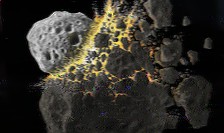
Shortwave Radiogram now changes to MFSK64 ...
آRSID: <<2018-07-06T20:39Z
MFSK-64 @
7780000+1500>>
This is Shortwave Radiogram in MFSK64.
Please send reception reports to radiogram@verizon.net
From Futurity:
Did heavy rain give Mars its deep valleys?
Peter Rüegg
1 July 2018
Heavy rainfall may have formed the valley networks on Mars that
bear a strong resemblance to those in arid landscapes here on
Earth, according to a new study.
Scientists have thought there must once have been enough water to
feed streams that cut channels into the subsoil, but the origins
of the water have been a matter of debate for years.
Was it rainwater that caused streams and rivers to swell? Or did
ice in the soil melt due to volcanic activity, and seep out to
form rivers? The two scenarios lead to completely different
conclusions about the climatic history of the red planet.
As reported in Science Advances, a study of all the mapped river
valleys on Mars come down on the side of the contours being
created by surface run-off of (rain)water. The researchers
exclude the influence of groundwater or melt water from the soil
as a dominant process for shaping these features.
There must have been sporadic heavy rainfall events on Mars over
a prolonged period of time with the rainwater running off quickly
to shape the valley networks, says lead author Hansjörg Seybold,
a physicist at the Institute for Terrestrial Ecosystems at ETH
Zurich.
That's how river valleys develop in arid regions on Earth. For
example, in Arizona, researchers observed the same valley network
patterns in a landscape where astronauts train for future Mars
missions. Valleys in arid regions fork at a narrow angle.
Because the branching angles on Mars are comparatively low, the
influence of groundwater seepage on Mars can be ruled out,
Seybold says.
River networks that re-emerging groundwater strongly affects,
like in Florida, for example, tend to have wider branching angles
between the two tributaries and don't match the narrow angles of
streams in arid areas.
Conditions like those found in terrestrial arid landscapes today
probably prevailed on Mars for only a relatively short period
about 3.6 to 3.8 billion years ago.
In that period, the atmosphere on Mars may have been much denser
than it is today. "Recent research shows that there must have
been much more water on Mars than previously assumed," says
Seybold.
One hypothesis suggests that the northern third of Mars was
covered by an ocean at that time. Water evaporated, condensed
around the volcanoes of the highlands to the south of the ocean,
and led to heavy rainfall there. As a result, rivers formed,
which left the traces that can be observed on Mars today.
The big question: Where did the water go?
"It's likely that most of it evaporated into space," Seybold
says. "Traces of it might still remain in the vicinity of Mars,
but this is a question for a future space mission."
Source: ETH Zurich
https://www.futurity.org/mars-valley-networks-rain-1799632/
Image: The angles of valley branches, seen here in a section of
the Warrego Valles region, on Mars are narrow and correspond to
those of arid regions on Earth ...
Sending Pic:305x151;
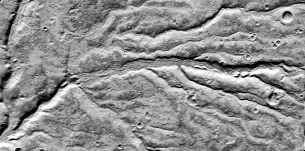
This is Shortwave Radiogram.
Please send reception reports to radiogram@verizon.net
Night of Nights
On 12 July starting at 0001 UTC, the Maritime Radio Historical
Society will be on the air in CW with its annual Night of Nights,
marking the anniversary of the last commercial Morse message in
the United States, transmitted in 1999.
Maritime stations KPH and KFS and amateur station K6KPH will be
active on several HF and MF frequencies.
For details: https://conta.cc/2MRgis1
See also:
http://radiomarine.org/
Meanwhile, another maritime HF station, WLO in Mobile, Alabama,
has gone off the air. See
https://bit.ly/2ze2c1Q
Image: The "tunnel" of cypress trees leading to the MRHS
(formerly RCA) receiving station in the Point Reyes National
Seashore in California ...
Sending Pic:228x152C;

This is Shortwave Radiogram.
Please send reception reports to radiogram@verizon.net
THIS WEEK'S IMAGES
A daylily grown by Shortwave Radiogram listener, contributor, and
gardener
Steve Yothment,
W4OGM, in Georgia ...
Sending Pic:227x169C;

The lastest visitor to the #cutletbirdcam1 maintained by our
announcer Jim Cutler is this Carolina wren. Jim adds: "That bill
means business." From
bit.ly/2lT3INg ...
Sending Pic:220x146C;

This bird image accompanied the Deutsche Welle news story "Can
bird watching help save Colombia's forests?" From
bit.ly/2KLCk1P
...
Sending Pic:180x224C;

Fireworks on the Mall in Washington DC on the 4th of July,
Independence Day in the USA. The Washington Monument is somewhat
visible at the bottom. From
bit.ly/2KywjGp ...
Sending Pic:145x216C;

And for fireworks and lightning simultaneously, see
wapo.st/2tTH5wH
The past week also included very hot weather just about
everywhere in the northern hemisphere and tropics. This map shows
high temperatures on 3 July. From
https://wapo.st/2KM6YVv ...
Sending Pic:238x112C;
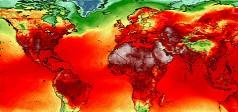
Our painting of the week is "Little Treetops II" by Scott Jackson
of NSW Australia. From
bit.ly/2KAV6tl ...
Sending Pic:178x222C;

Shortwave Radiogram returns to MFSK32 ...
RSID: <<2018-07-06T20:58Z
MFSK-32 @
7780000+1500>>
This is Shortwave Radiogram in MFSK32 ...
Transmission of Shortwave Radiogram is provided by:
WRMI, Radio Miami International, http://wrmi.net
and
Space Line, Bulgaria, http://spaceline.bg
Please send reception reports to radiogram@verizon.net
And visit http://swradiogram.net
Twitter:
@SWRadiogram
I'm Kim Elliott. Please join us for the next Shortwave
Radiogram.
|
Ending song:
https://www.midomi.com/index.php?action=main.track&track_id=100570935907773674&from=voice_search Machito - Heat Wave https://www.youtube.com/watch?v=G8YSVctoIdw
|

http://www.rhci-online.net/radiogram/radiogram.htm
|
QTH: |
D-06193 Petersberg (Germany/Germania) |
|
|
Ant.: |
Dipol for 40m-Band & Boomerang Antenna 11m-Band |
|
|
RX for RF: |
FRG-100B + IF-mixer & ICOM IC-R75 + IF-mixer |
|
|
Software IF: |
con STUDIO1 - Software italiano per SDR [S-AM-USB/LSB] + HDSDR 2.76 stable [2017-02-02] - for scheduled IF-recording |
|
|
Software AF: |
Fldigi-4.00.12 + flmsg-4.0.3 images-fldigifiles on homedrive.lnk |
|
|
OS: |
German XP-SP3 with support for asian languages |
German W7 32bit + 64bit |
|
PC: |
MEDION Titanium 8008 (since 2003) [ P4 - 2,6 GHz] |
MSI-CR70-2MP345W7 (since2014) [i5 -P3560 ( 2 x 2,6GHz) ] |


RSID: <<2018-07-09T07:30Z
MFSK-32 @
7730000+1585>>
Welcome to BSR Radiogram #14, a
production of James M. Branum (KG5JST) and BroadSpectrumRadio.com.
Life has been crazy busy lately, leaving little time for my little radio
project, so this week I'm only sharing some pictures for the BSR Radiogram, all
from a recent trip I took to Fort Sill, Oklahoma for work (FYI, I am a
civilian attorney who represents US servicemembers in courts-martial,
administrative board hearings, conscientious objector hearings, etc.). While on
post, I decided to drive out to one of the more rural areas of the
military installation to visit the Apache POW (prisoner of war) cemeteries where
Geronomio and many of his kinfolks are buried. Being there was an emotional
thing, a reminder of the heavy cost born by so many, in so many
parts of the world, by the ugly imperialist history of the United States. I have
several pictures I'll be sharing from the cemetery and one of Geronomio himself.
After visiting the cemetery, I drove north, off the post and into the beautiful
and scenic Wichita Mountains National Wildlife Refuge, home of herds of free
range buffalo, elk, longhorn cattle, etc. I didn't have a lot of
time to sight see, but I did drive up the spiral road to the summit of Mount
Scott to take some pictures. I have 2 pictures of the mountain itself and one of
me from the summit.
One last thing... since this Radiogram is shorter than usual, I'll be playing it
two times in a row, so if you missed the first 15 minutes, keep your recorder
and/or FLDGI software going as it will repeat.
As always your QSL reports are always welcome at
broadspectrumradio@gmail.com.
Hopefuly next week I'll be able to do another mailbag show for all of the
detailed QSL reports I've been receiving.
73, James (KG5JST)
Sending Pic:300x419p4;
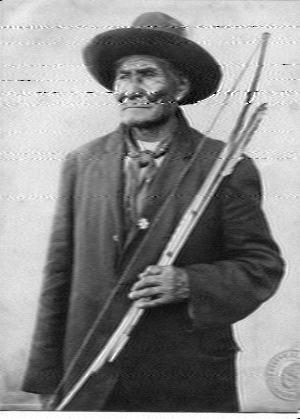
Sending Pic:300x244Cp4;
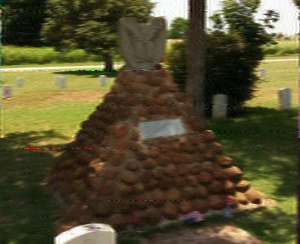
Sending Pic:300x225Cp4;
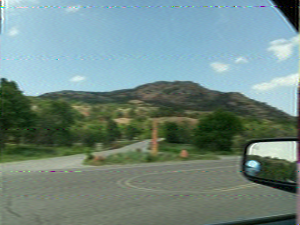
Sending Pic:200x119Cp4;
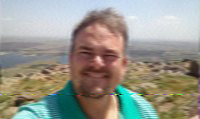
Sending Pic:300x186Cp4;
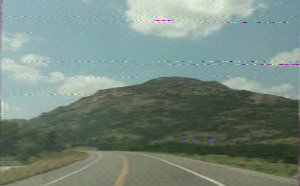
Sending Pic:500x321p4;
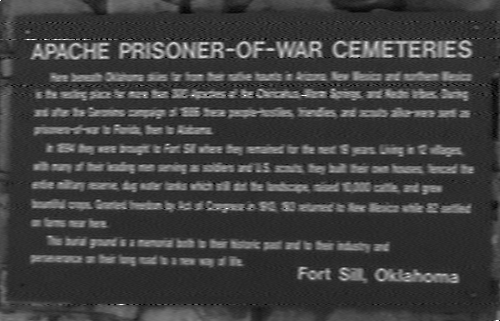
Sending Pic:481x290p4;
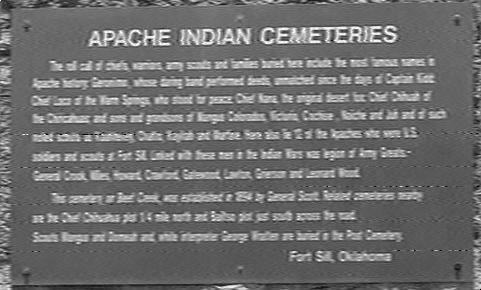
Sending Pic:150x206Cp4;
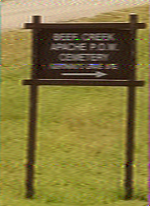
RSID: <<2018-07-09T07:45Z MFSK-32 @ 7730000+1585>>
Welcome to BSR Radiogram #14, a production of James M. Branum (KG5JST) and
BroadSpectrumRadio.com.
Life has been crazy busy lately, leaving little time for my little radio
project, so this week I'm only sharing some pictures for the BSR Radiogram, all
from a recent trip I took to Fort Sill, Oklahoma for work (FYI, I am
a civilian attorney who represents US servicemembers in courts-martial,
administrative board hearings, conscientious objector hearings, etc.). While on
post, I decided to drive out to one of the more rural areas of the
military installation to visit the Apache POW (prisoner of war) cemeteries where
Geronomio and many of his kinfolks are buried. Being there was an emotional
thing, a reminder of the heavy cost born by so many, in so many
parts of the world, by the ugly imperialist history of the United States. I have
several pictures I'll be sharing from the cemetery and one of Geronomio himself.
After visiting the cemetery, I drove north, off the post and into the beautiful
and scenic Wichita Mountains National Wildlife Refuge, home of herds of free
range buffalo, elk, longhorn cattle, etc. I didn't have a lot of
time to sight see, but I did drive up the spiral road to the summit of Mount
Scott to take some pictures. I have 2 pictures of the mountain itself and one of
me from the summit.
One last thing... since this Radiogram is shorter than usual, I'll be playing it
two times in a row, so if you missed the first 15 minutes, keep your recorder
and/or FLDGI software going as it will repeat.
As always your QSL reports are always welcome at
broadspectrumradio@gmail.com.
Hopefuly next week I'll be able to do another mailbag show for all of the
detailed QSL reports I've been receiving.
73, James (KG5JST)
Sending Pic:300x419p4;
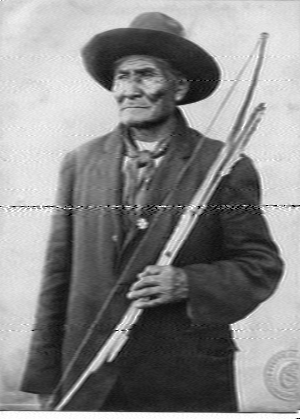
Sending Pic:300x244Cp4;
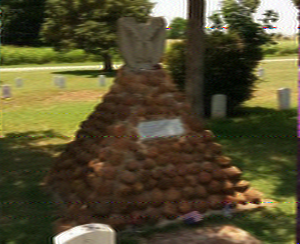
Sending Pic:300x225Cp4;
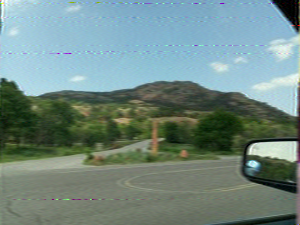
Sending Pic:200x119Cp4;

Sending Pic:300x186Cp4;
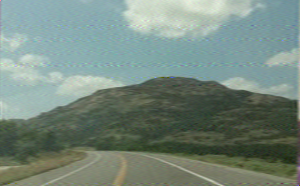
Sending Pic:500x321p4;
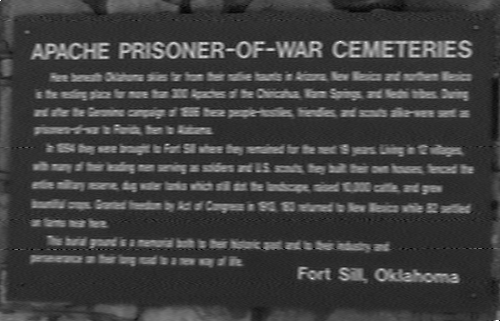
Sending Pic:481x@
